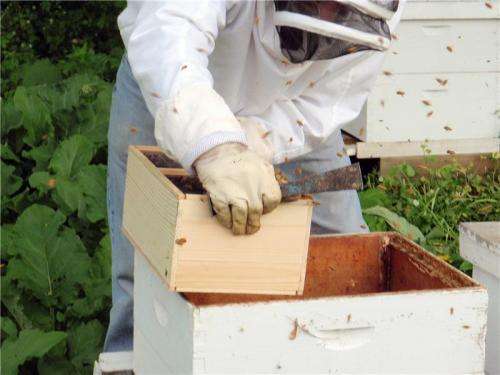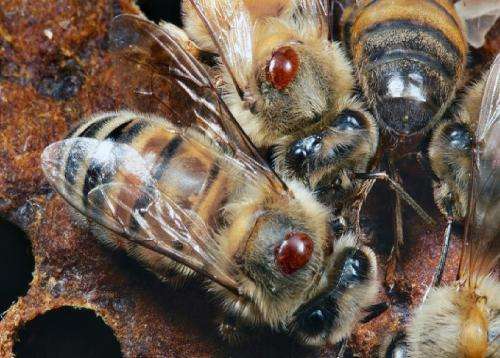Battle against bee-blood-eating parasite

Mexico is one of the top five bee producing countries worldwide and the second in exportation. However, the beekeepers can see their production affected by the attack of a parasite, the Varroa acari, which feeds on hemolymph of the bees.
Currently, the control methods employed are of synthetic origin, but face the main problem of generating resistance by the acari, which reduces its effectiveness; besides, is not rare to find traces of it in the bee wax and honey.
According to research by the National Institute of Forest, Agricultural and Livestock Research (INIFAP), not treating the colonies infested by Varroa can lead to a 65 per cent less production in comparison to colonies where the acari is controlled.
Seeing this disjunctive, researchers from the INIFAP talked to the beekeepers about the organic control of the pest employing powdered thymol, which is easy to employ and cheaper, the acari doesn't develop resistance to it nor it generates residue on honey or bee wax if generating appropriately.
Miguel Arechavaleta Velasco, head of research at INIFAP, explains that Varroa is an acari that feed on bee hemolymph; like a tick, it produces a disease in the colony called varroasis that can kill entire hives, being the main problem that beekeepers face worldwide.

"Among the organic product that we have studied, thymol has given encouraging results; it's an essential oil obtain from thyme. There are commercial thymol based products for Varroa control, but we developed a different application form, resulting easier and cheaper for the beekeeper":
The proposed method consists in using powdered thymol mixed with powdered sugar. The mixture is spread in tin foil and placed in hives 90 days before bloom begins, "The most part of the honey produced in Mexico is exported, mostly to Europe, where health standards are very high, mainly concerning chemical residues. Hence the importance of Varroa being controled organically", says Arechavaleta Velasco.
Is feasible to apply in any beekeeping region in Mexico, and is directed not only to the production of honey, pollen and royal jelly, but also to those dedicated to crop pollination and queen bee breeding.
The researcher specialized in bee genetics points out that the developed technology was recently published on INIFAP, "we are in process of validation using field tests with beekeepers, and based on the results obtained we will distribute it massively".
According to the Service of Fishing and Agrifood Information (SIAP), in 2010 Mexico produced almost 56 thousand tons of honey, being Yucatán, Jalisco and Campeche the states with the biggest production. Business wise, it generates 512 million Mexican pesos a year from internal consumption and sales to the exterior.
Provided by Investigación y Desarrollo




















